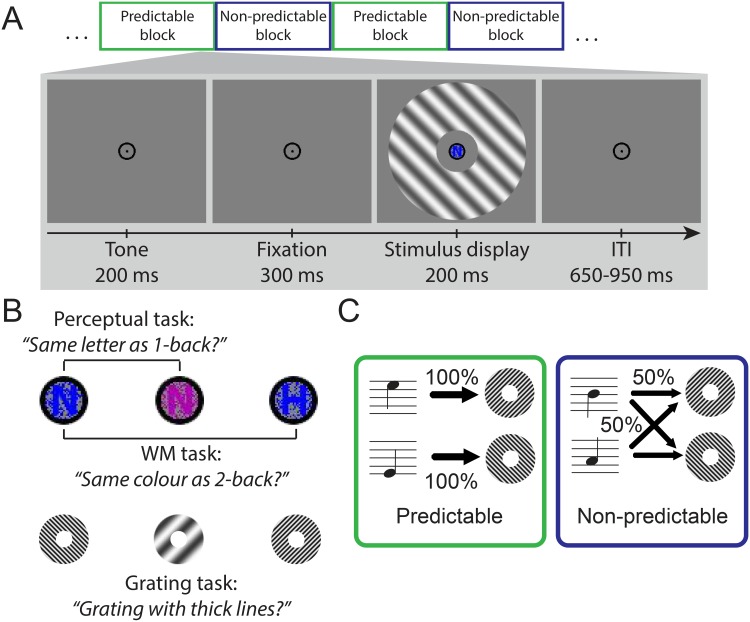Fig 1. Experimental paradigm.
(A) During each of the three tasks, stimuli were presented in predictable and non-predictable blocks, alternating every 12 trials. Each trial started with an auditory tone that either perfectly predicted the orientation of the subsequent grating stimulus (45° or 135°), or carried no orientation information. (B) Participants performed two tasks on the stimuli in the fixation bull’s-eye. During the perceptual task, targets were 1-back letter repetitions (the magenta ‘N’ is a target) that were difficult to perceive due to added noise. During the working memory task, targets were 2-back colour repetitions (the blue ‘H’ is a target) that were easy to perceive (as the whole inner ring has the same colour) but taxed the working memory system more strongly than the 1-back task. During the grating task, participants responded to the spatial-frequency of the grating stimuli. Targets had lower spatial-frequency than non-targets. (C) Pairing between auditory tones and grating orientations. In predictable blocks, tones predicted grating orientation with 100% accuracy. In non-predictable blocks, the tones provided no orientation information. ITI = inter-trial interval.

